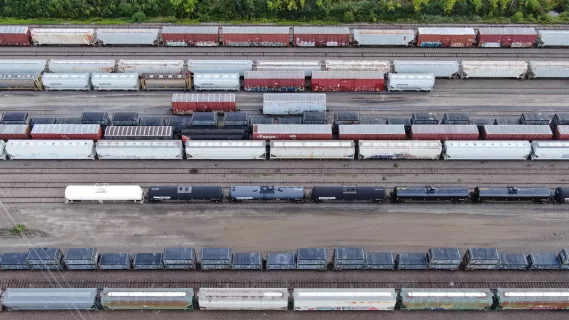The implementation of the $250 billion Gulf Railway project is taking shape as it gains significant momentum. Despite the political hurdles that have reeled it back, the project seeks to go beyond its developmental phase. The railway project is expected to cover a distance of over 1,240 miles along the cost. It is also expected that the railway line will stretch from Muscat in Oman to Kuwait City. Through this, it will provide a swift connection for both passengers and freight between major urban centers of the six member states of the Gulf Cooperation Council (GCC). “The GCC rail project will represent a significant leap in connectivity and integration in the Gulf region. It will also yield direct positive impacts on intra-trade and the freedom of movement for citizens and residents among the Council states,” noted the council’s website.
Project Factsheet
Region: Gulf Region
Countries Involved: Oman, Kuwait, and other members forming the GCC
Cost: $250 billion
Significance: Improve transport infrastructure in the Gulf Region
Phase of project: Development Phase
Project Timeline: 6 Years
The State of Affairs Regarding the Multibillion-Dollar Project
Despite its setbacks, the Gulf States involved are focused on ensuring that the project is successfully delivered. Each of the six GCC member states is responsible for carrying out part of the project that falls within its borders. Nonetheless, political and economic setbacks within and among the nations has prevented the Gulf Railway project from surging forward. In 2016, Mohammed Al Shuaili, the Omani Ministry of Transport and Communications, noted that his country would be halting work on the GCC Railway. The reason he noted was that it appeared other Gulf States “had decided to stop work on the project.” The project has had some achievements over the years that have aimed to ensure its implementation.

One of this is the significant boost in 2021 when leaders of the six states agreed to establish a centralized authority to coordinate construction efforts among Council members. Regardless, domestic political challenges have continued to obstruct its progress. In December, EIU reported that setbacks in Kuwait had prevented the country from implementing its numerous railway projects, including its portion of the GCC rail project.
Also read:
Multi-Billion UAE High-speed Rail Project by Etihad Rail: Linking Abu Dhabi and Dubai
The Significance of the Gulf Railway Project
The significance of the Gulf Railway project is one that has already proven to have unprecedented implications. Firstly, with its enormous cost of between $167 billion and $250 billion, the railway project ranks as one of the world’s largest megaprojects under construction. It is only outranked only by NEOM, the $500 billion futuristic city under construction Saudi Arabia. Furthermore, the Trans-European Transport Network rail also outranks it. It is a $600 billion project that aims to enhance the continent’s rail connectivity. The Gulf Railway project was initially launched in 2009 and planned for completion by 2018. However, oil price slumps propagated the fiscal difficulties of the Gulf States involved in the mid-2010s.

In turn, this delayed the project, according to the Economist Intelligence Unit (EIU). The timeline has since been extended several times. The recent one is a scope of 2030 as the latest estimated completion date. As of September, the project was still in its design stages, with the focus remaining on feasibility studies, the appointment of consultants and tender processes for various segments of the railway. It is estimated that 6 million passengers will be able to use the railway by the end of the decade. This number is expected to rise to 8 million by 2045. The levels of freight being transported will increase to 271 million tons from 201 million tons over the same period.
Also read:

Leave a Reply